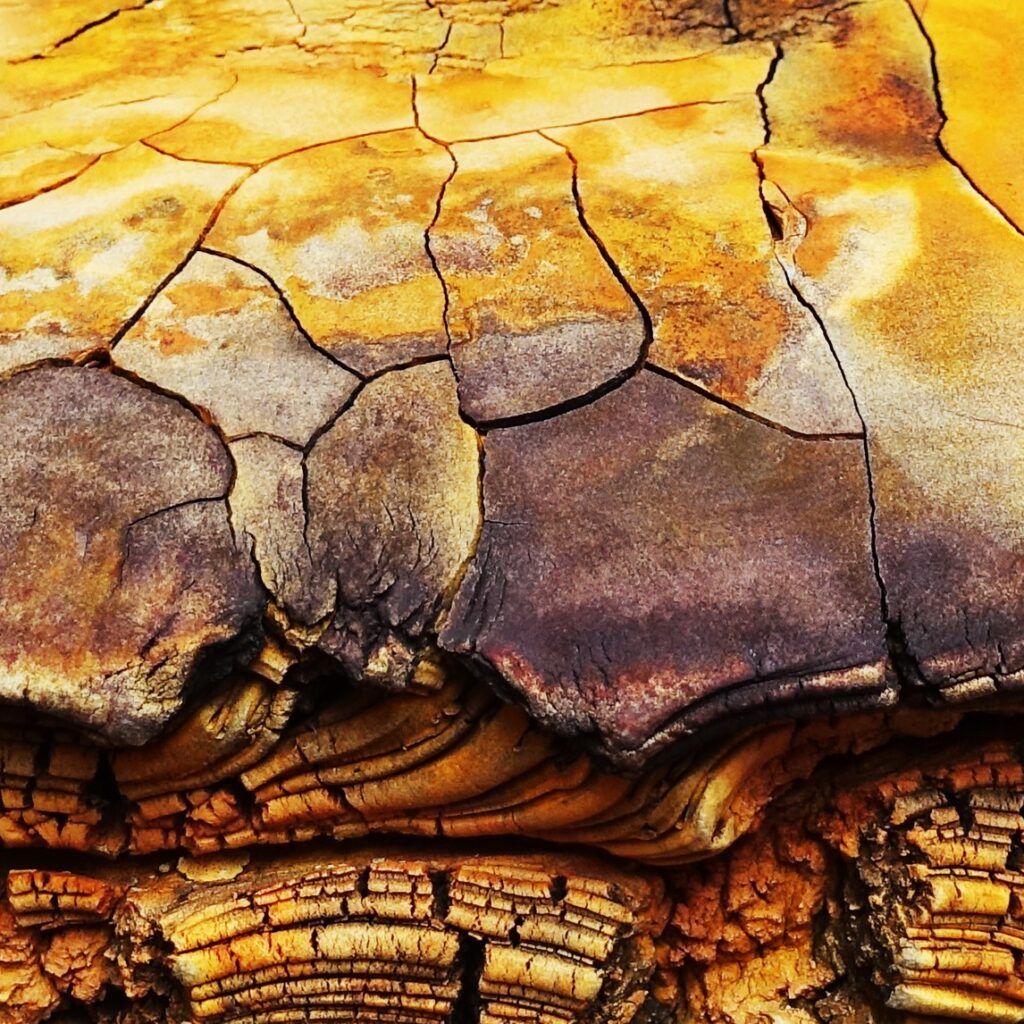
Six ceramics.
The origin of ceramics is connected to the birth of civilisation itself. Throughout history, humankind has been fascinated by clay’s plasticity and the ability to transform it with fire. Clay has been relied on to create a gamut of objects, ranging from strictly utilitarian ones to objects with aesthetic or symbolic aims. These pieces reflect every period and are a manifestation of every culture. The richness of the material and its finishes, its plastic capabilities, the changes that emerge during firing and the sheer variety of working methods have made the possibilities that ceramics offers endless. And this potential is constantly evolving.
This exhibition sets out to showcase the diversity of current ceramics practices, as seen through the work of six ceramicists. Their unique and personal approaches share a passion for material and an interest in exploring new creative processes allowing them to express their art.
“I believe there is always a very close interaction between the materials you work with, and your own personality given that, in a way, it is necessary to become the material you work with to understand it well and anticipate its demands.”
María Oriza
The work of ceramist Eusebio Sánchez brings us a fresh look at the prehistoric art of modelling through coiling. With this technique, the pieces are shaped by superimposing a series of clay rolls, which are later joined together by pressing with the fingers. The final result is a uniform and even wall. Eusebio is interested in making these coils visible, neither hiding nor blurring them. He prefers to use their guise to build coiled walls, highlighted by slip ware with subdued colours. These enigmatic and sinuous forms evince the relationship between structure and form.
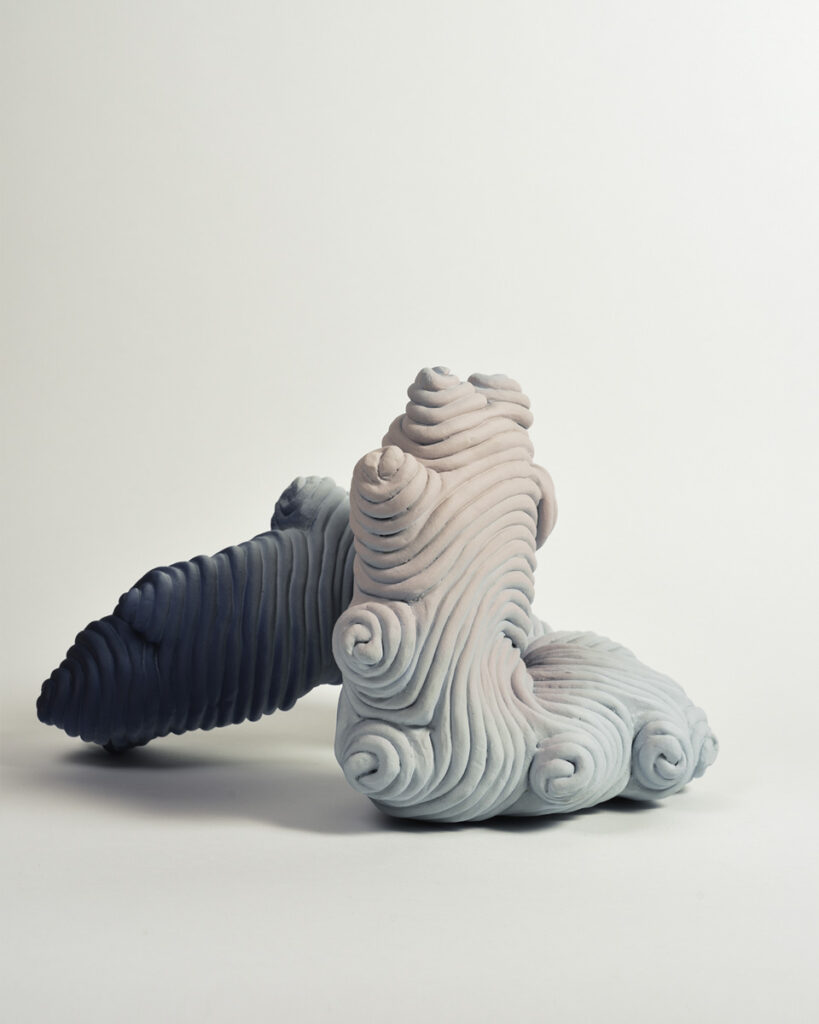
Eusebio Sánchez. Blues Hues, 2021
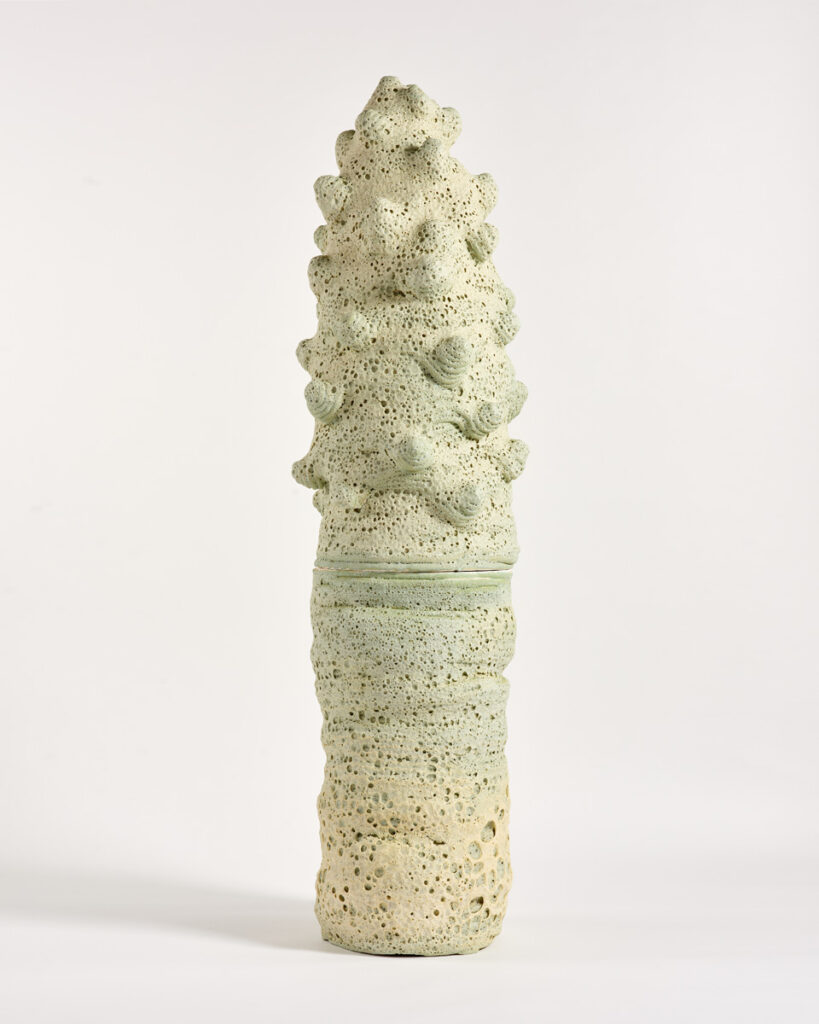
Eusebio Sánchez. Toes by the shore, 2019
Nicholas Arroyave-Portela is the only ceramist exhibiting who uses the thrown-wheel as a tool to create volumes. Once the piece has been thrown, he then deforms it manually, transforming its appearance. Sometimes there are grooves he makes with his fingers, which remind us of the path water follows while clay is worked. Other times there are creases and pleats in the fine walls of the piece, almost resembling crumpled paper. The outward aspect of these works can mislead us, given their fluidity and slippery forms. These vessels are full of movement and look as if they were crumbling or about to collapse.
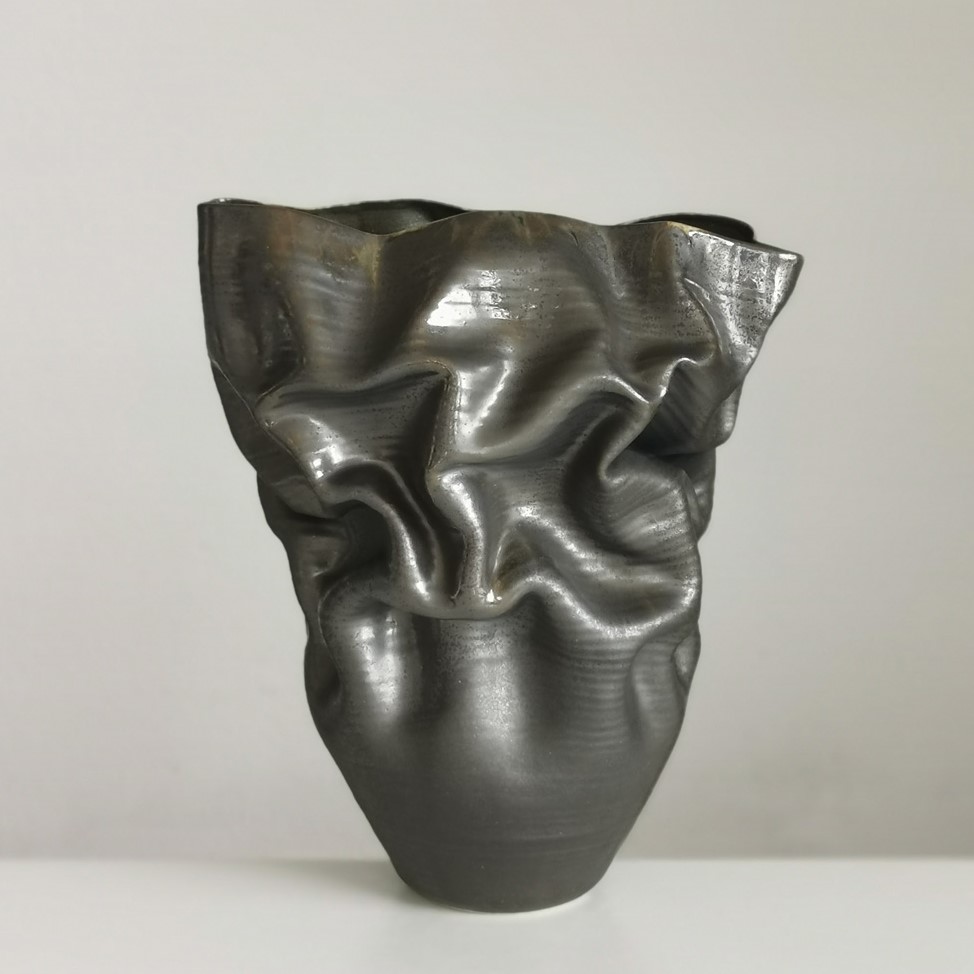
Nicholas Arroyave-Portela. Nº 59 Tall Black Crumpled form, 2021
The artworks are all about investigating, experimenting, and playfully seeking beauty, surprise, and emotion. The artist Rafa Pérez says the pastes he makes and mixes himself are just as important as the unpredictable effect of their transformation in the oven. These are abstract-looking pieces, with diverse improvised forms, multiple finishing techniques and occasional addition of other materials, are objects that want to be looked at and found. In these objects, it is as if human intervention had never played a role.
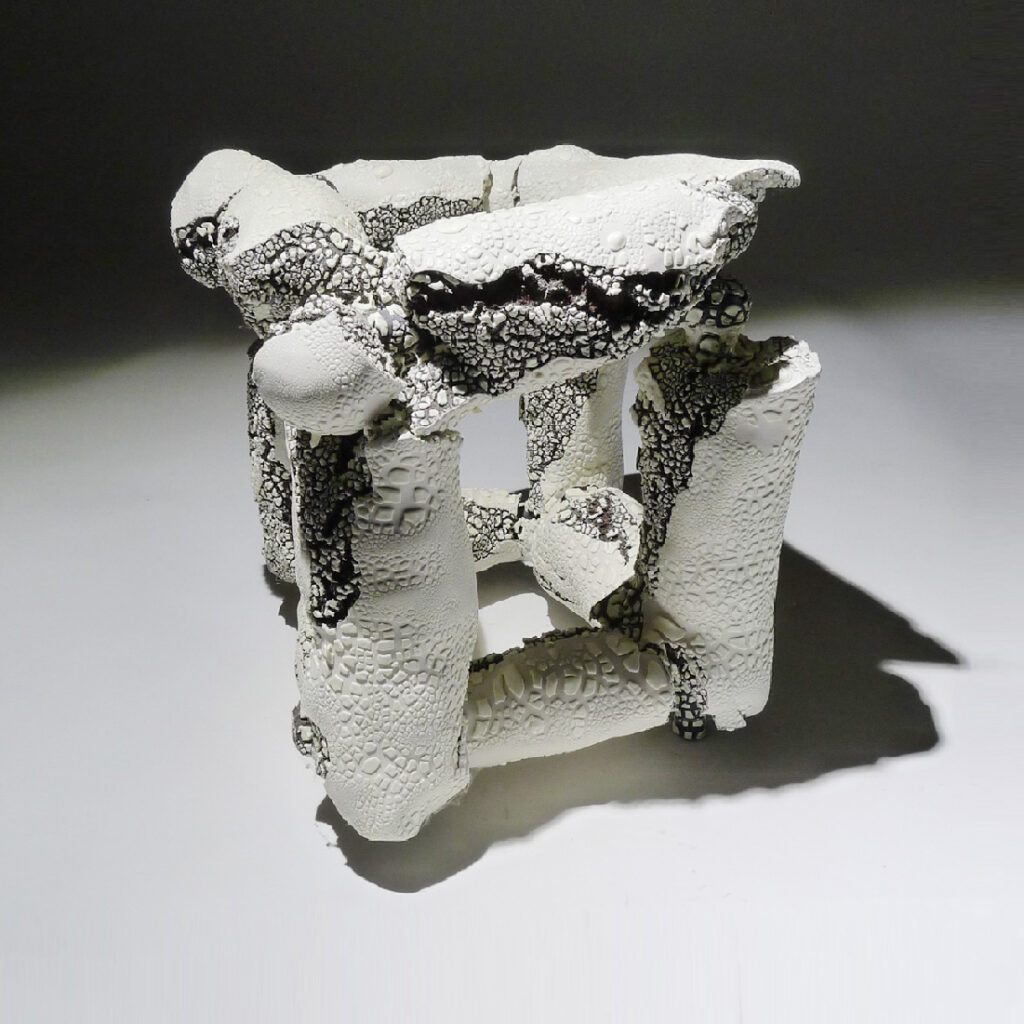
Rafa Pérez. Sin título, 2014
The multidisciplinary creator Ícaro Maiterena has developed a personal style of work. An approach which researches the distinguishing qualities of ceramics and is rooted in the intimacy of kneading clay. He plays with the material, spontaneously handling it. His work involves discovering, observing and exploring. His pieces are like geological products of ancestral times, imaginary fossils, rifts, crusts and footprints taking us back to remote eras, which need to be unravelled and interpreted. These sculptures bring us closer to nature, life and matter.
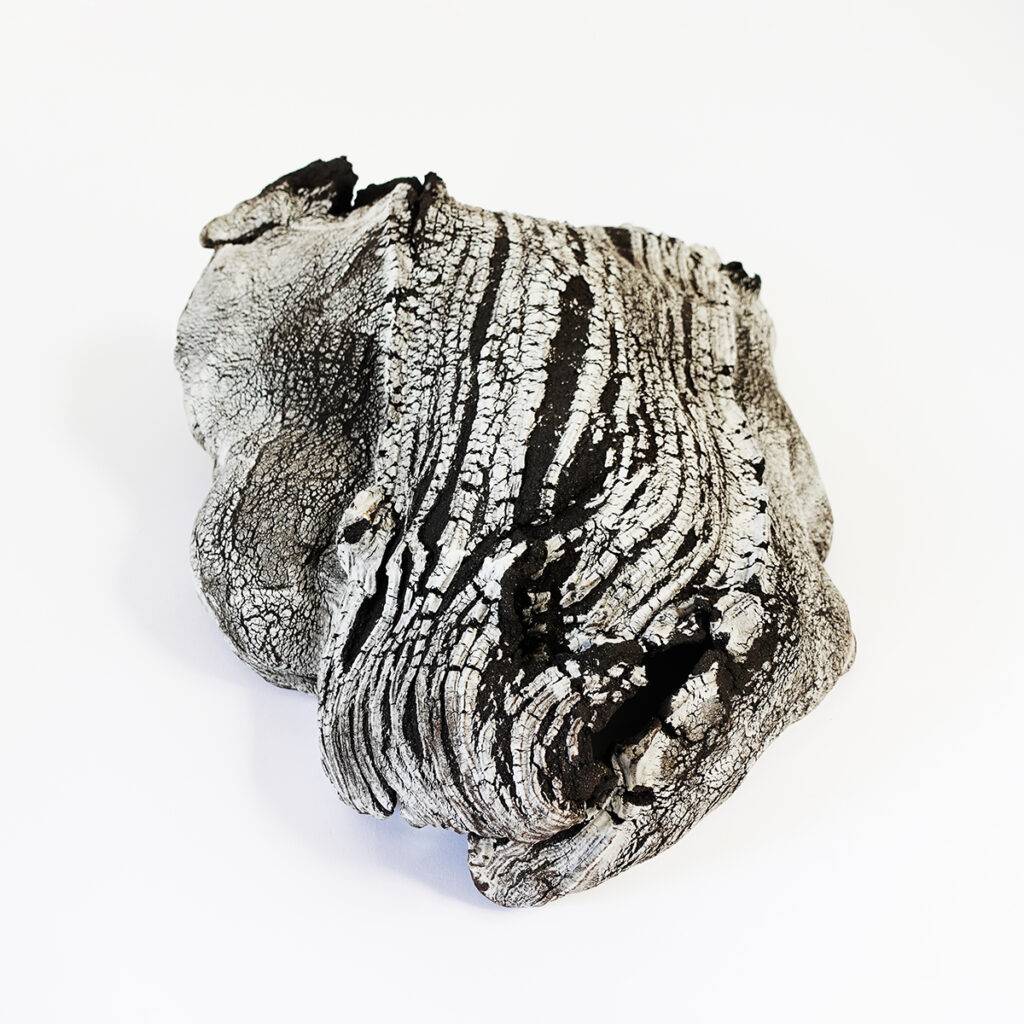
Ícaro Maiterena. Impronta gestual III, 2018
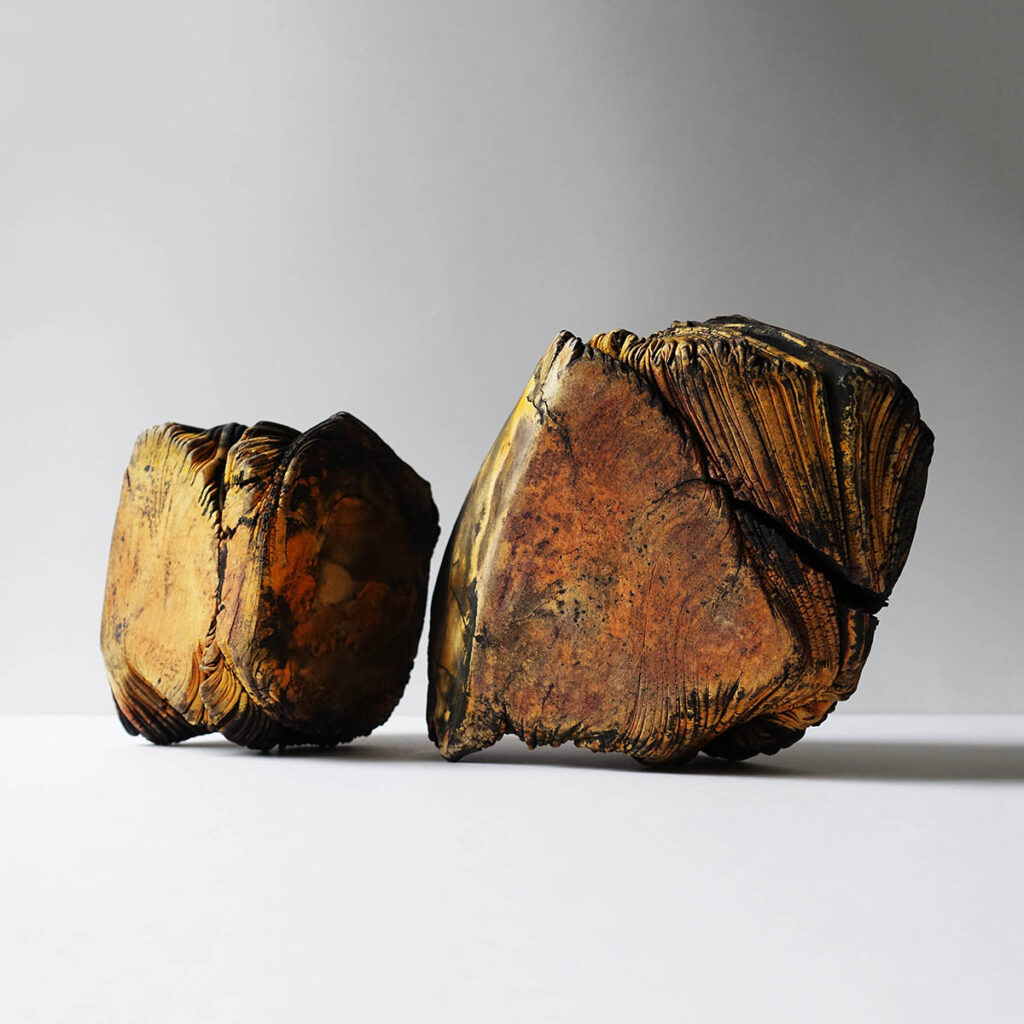
Ícaro Maiterena. Orogénesis gestual I y III, 2021
María Oriza works with emptiness, which is like a container of the immaterial, constructing volumes by working with planes and modular repetition. She cuts, bends, folds and puts ceramic plates together, looking for symmetries, asymmetries, and repetition. Her formal language fills the arising void with meaning, providing multiple symbolic and metaphoric connotations. The surface drawing, which changes as the viewer moves, bolsters the formal structure of volume and extends the limits of form and content.
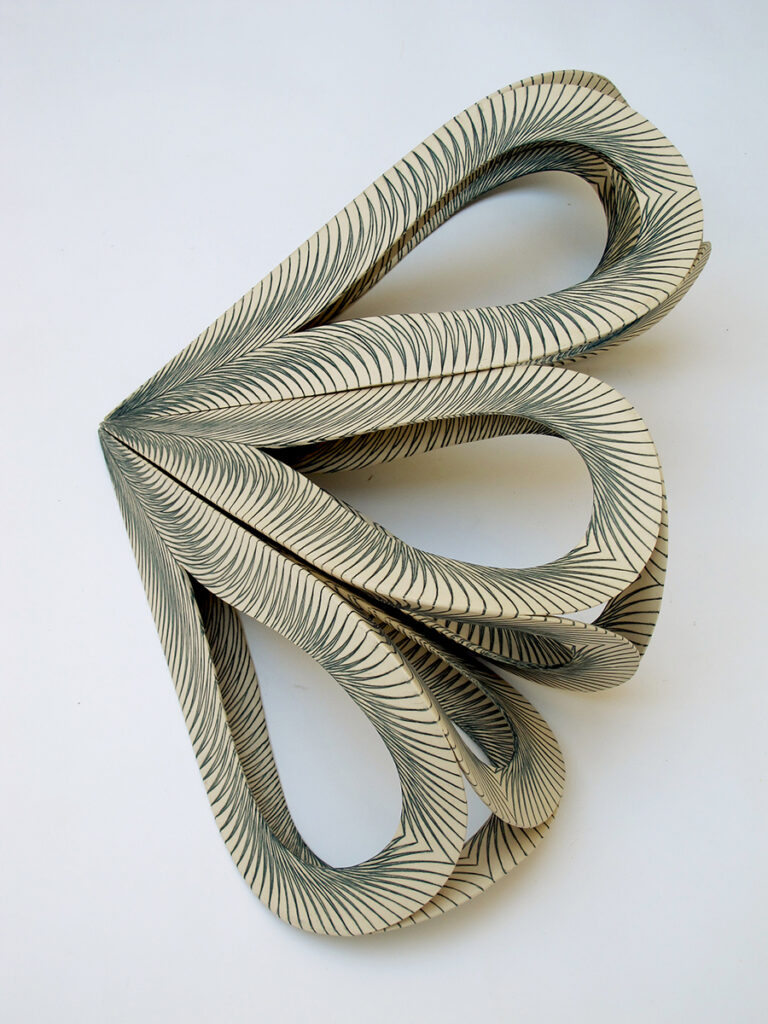
María Oriza. Anatomía de la lágrima. Transparente al azul de tu mirada, 2016
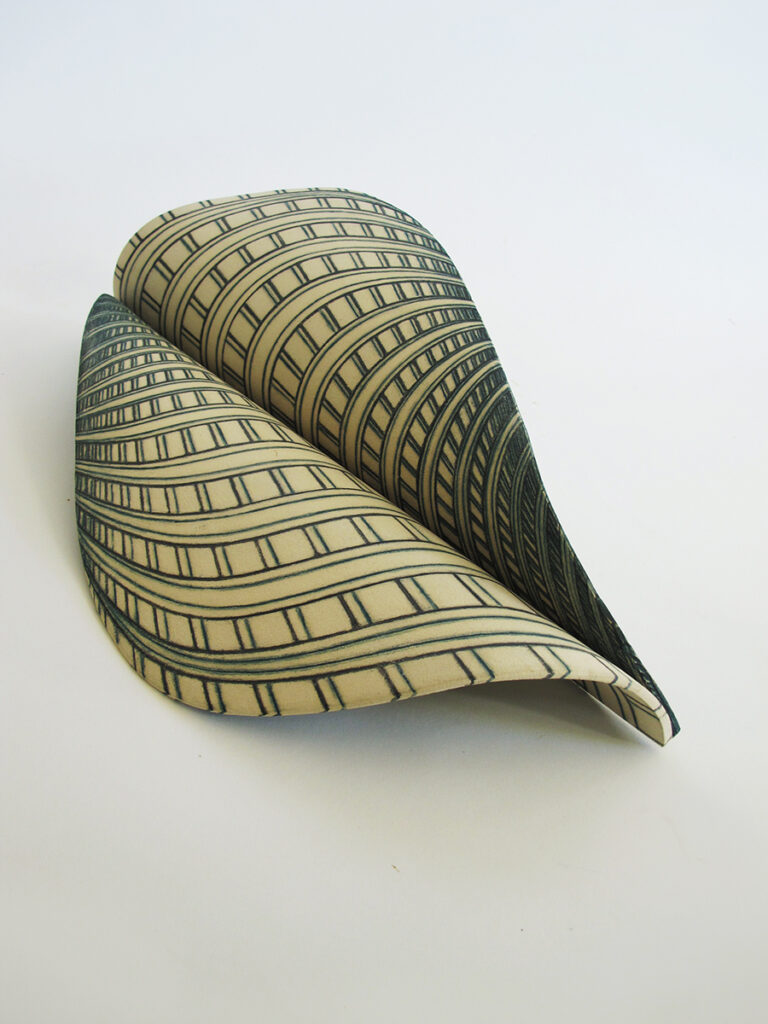
María Oriza. Cynfa verde, 2019
Roger Coll “builds” his ceramic sculptures with modular segments, assembled together to create a final shape. He says this is achieved “in the same way as bricks are used to build a wall”. Here we can find proof of a multidisciplinary training in which architecture has a pivotal role. Based on this technique, he has developed an own and recognisable artistic language, where the repeated use of an element gives rise to a series of forms intertwining and growing upon themselves. Here colour is a decisive element.
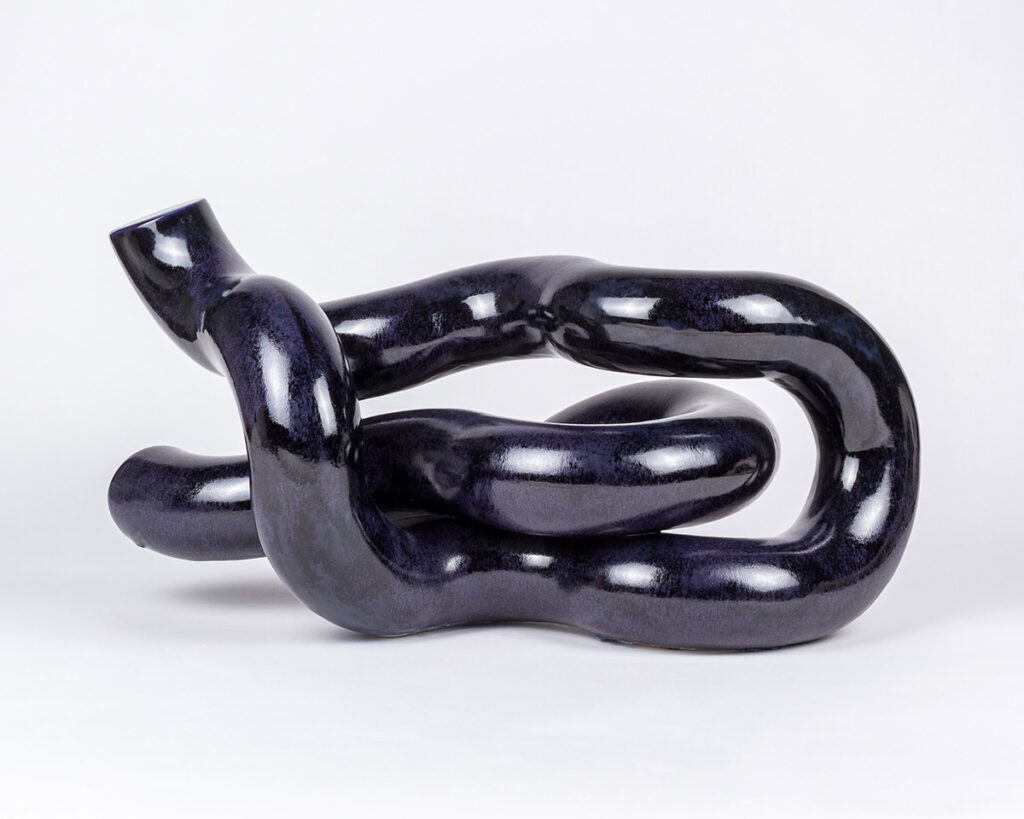
Roger Coll. BLUECO2101, 2021
Although every one of the artists selected in this exhibition approaches their work from an own viewpoint, using their own unique skill, some characteristics are shared.
For instance, the creative processes of Nicholas Arroyave-Portela and Ícaro Maiterena have a “ritual” side to them.
“When working with materials as metaphorically powerful as Earth, air, fire and water I am also made aware that the ritualistic and performative aspects of throwing have become like a mantra for me, one in which the revolving motion of the wheel head, the clay moving through my hands and the water acting as a lubricant to create form also allows me to connect to a particular state of mind.”
Nicholas Arroyave-Portela
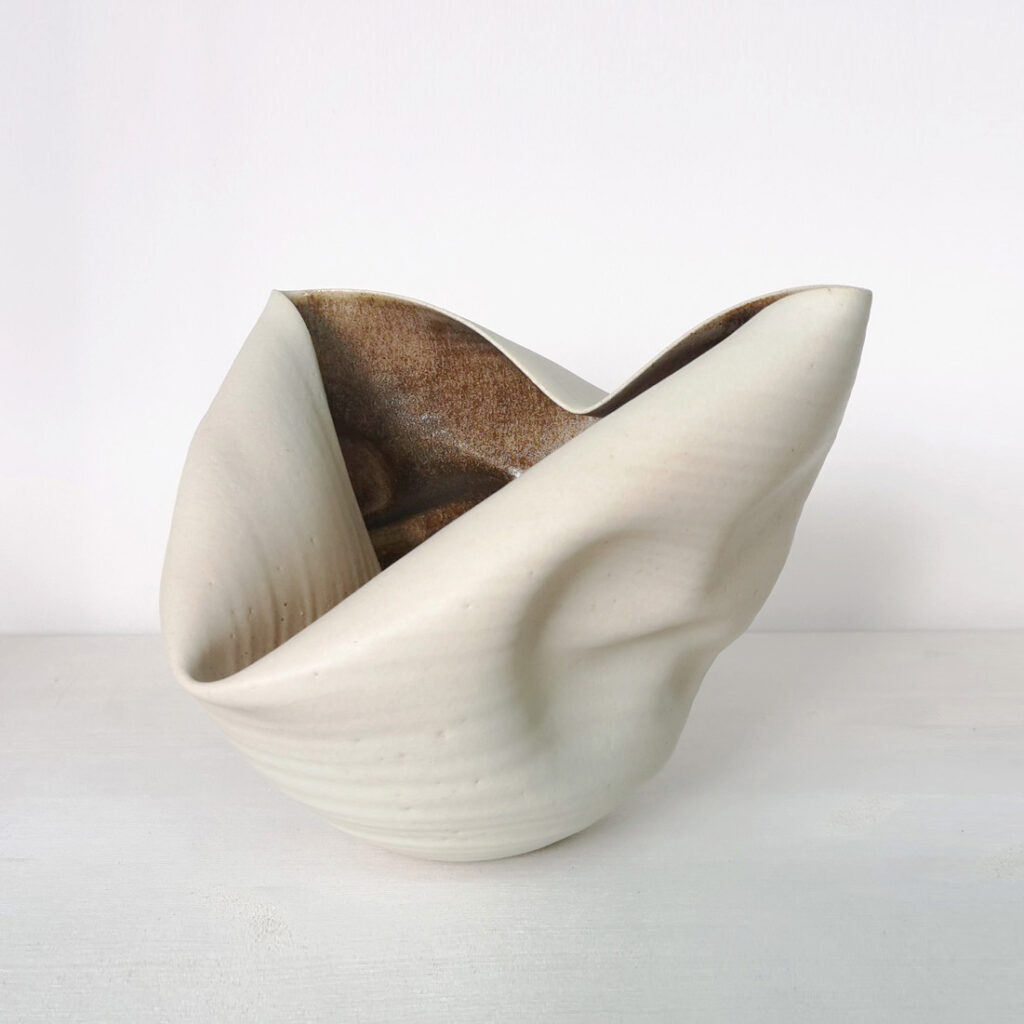
Nicholas Arroyave-Portela. Nº 56 Small White collapsed form, 2021
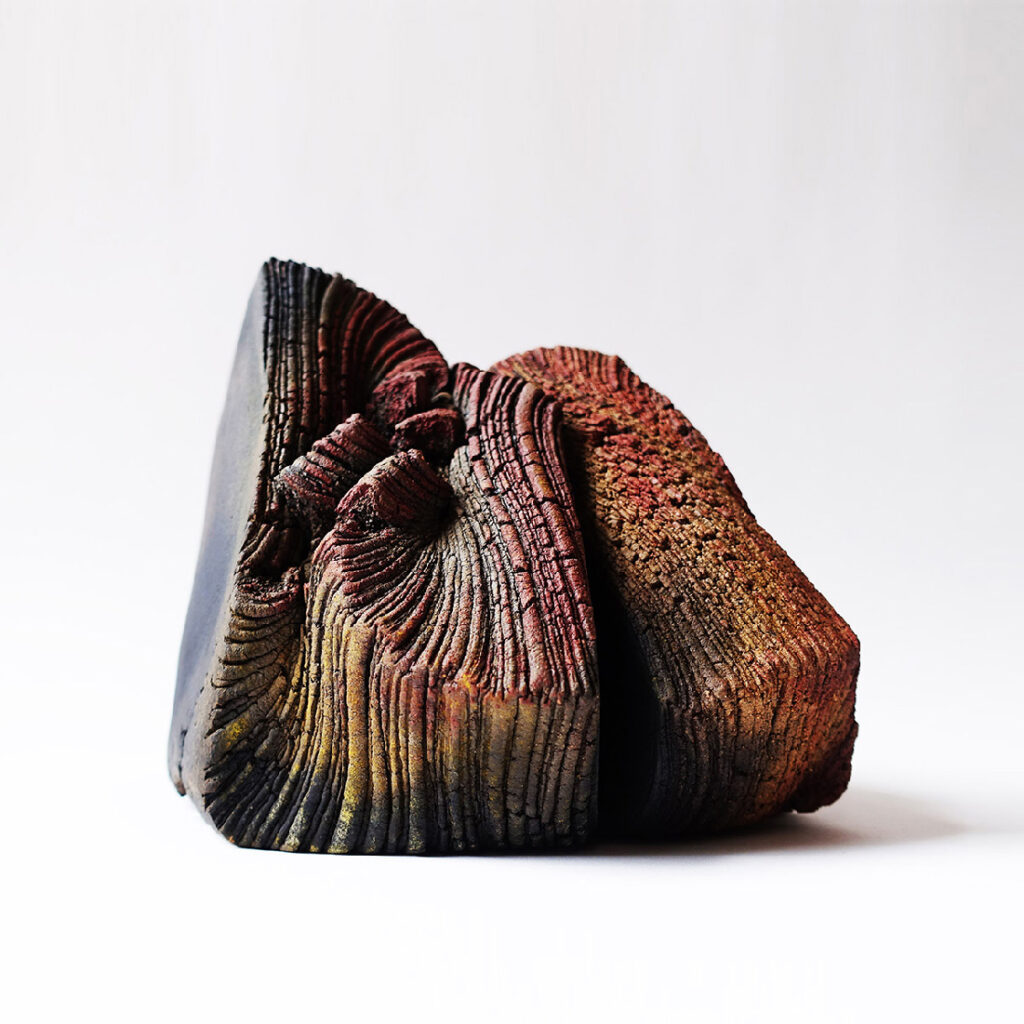
Ícaro Maiterena. Vestigio de un movimiento V, 2020
For Ícaro Maiterena the very core of the process is found in kneading. Kneading as a ritual gesture, as a sort of “tactile pottery artist prayer”, where the body, the rhythm of the movements and the cadence of breath provide a connection with oft-repeated ancestral gestures.
This force of the body on the material and the gesture that the hands imprint is a defining part of Ícaro Maiterena’s plastic work. Rafa Pérez also believes that handling materials is a core feature of his work. He piles, folds, wraps, cuts, and mixes different clays and coloured pastes. After firing, complex results emerge, where layers, tears, fractures, cracks and bursts are all blended in, mingling together.
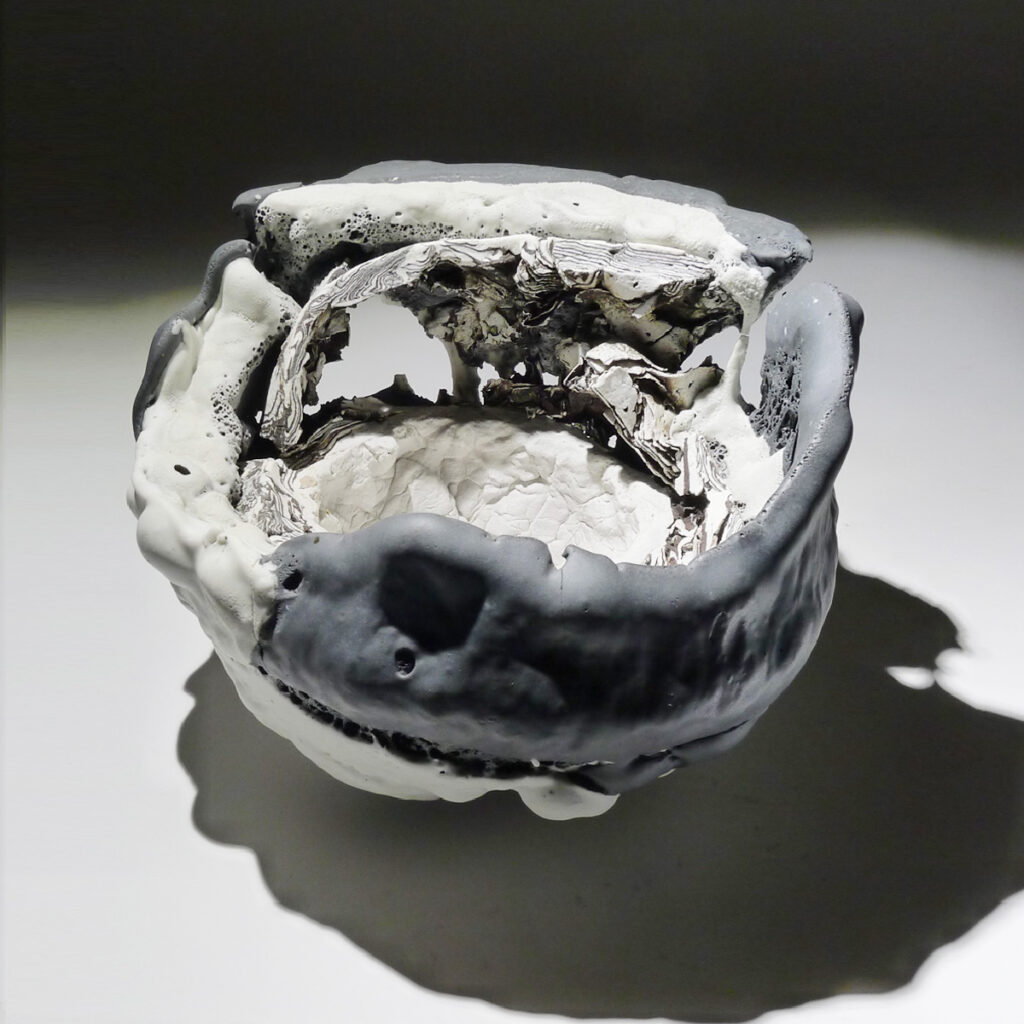
Rafa Pérez. Sin título, 2018
Roger Coll and María Oriza also share features as to the way their processes are planned, although the formal result of their pieces is radically different. Both artists are interested in modular repetition as a way of creating the volumes and spaces and they “build” their pieces based on this idea.
In the case of Roger Coll, his pieces are formed by linking segments created with moulds, giving rise to sinuous and fluid forms, wrapping around one another.
María Oriza, however, always works based on a plane that is manipulated until the final volume is built, where the void created is brimming with meaning.
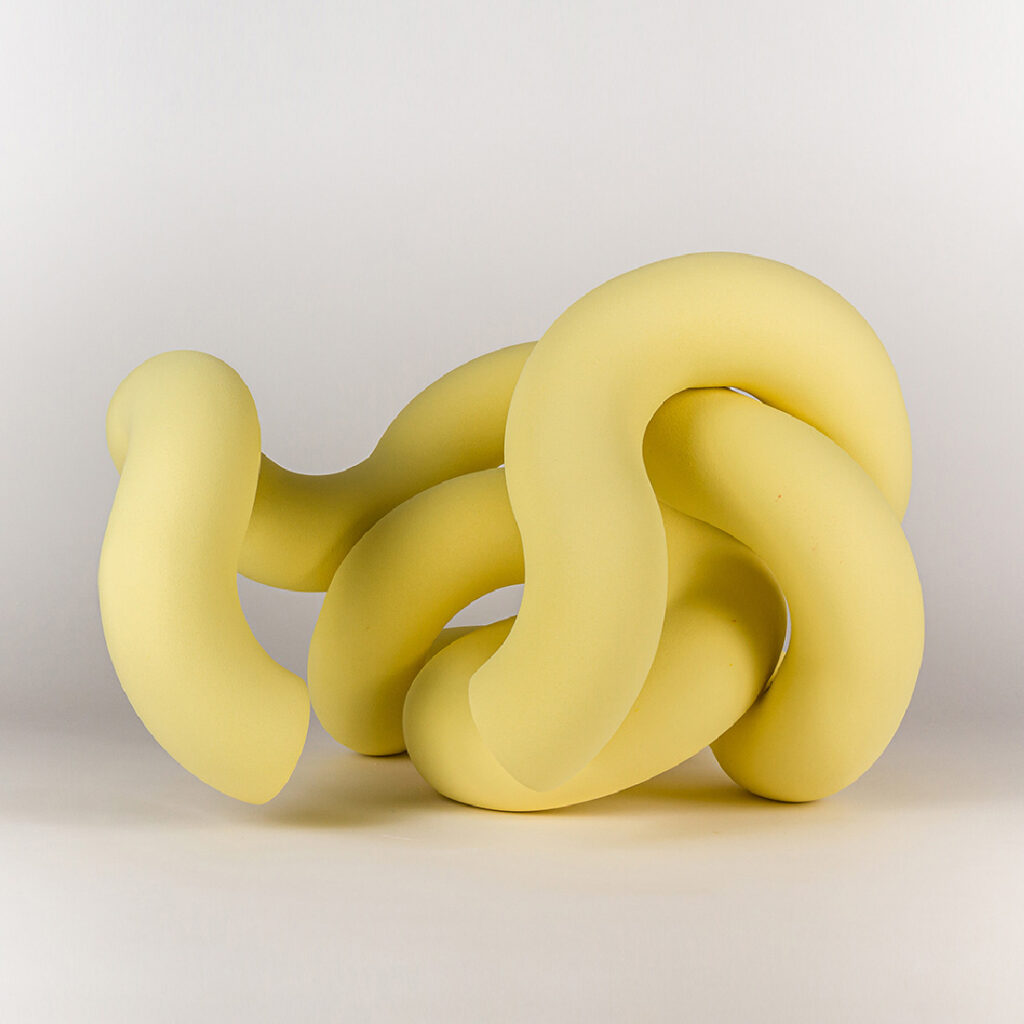
Roger Coll. YELLOWWYK2001, 2020

María Oriza. Érebo, 2016
Eusebio Sánchez finds inspiration for his pieces in the coiling technique and the process arising out of this coiling, in a quest to create abstract and complex arrangements.
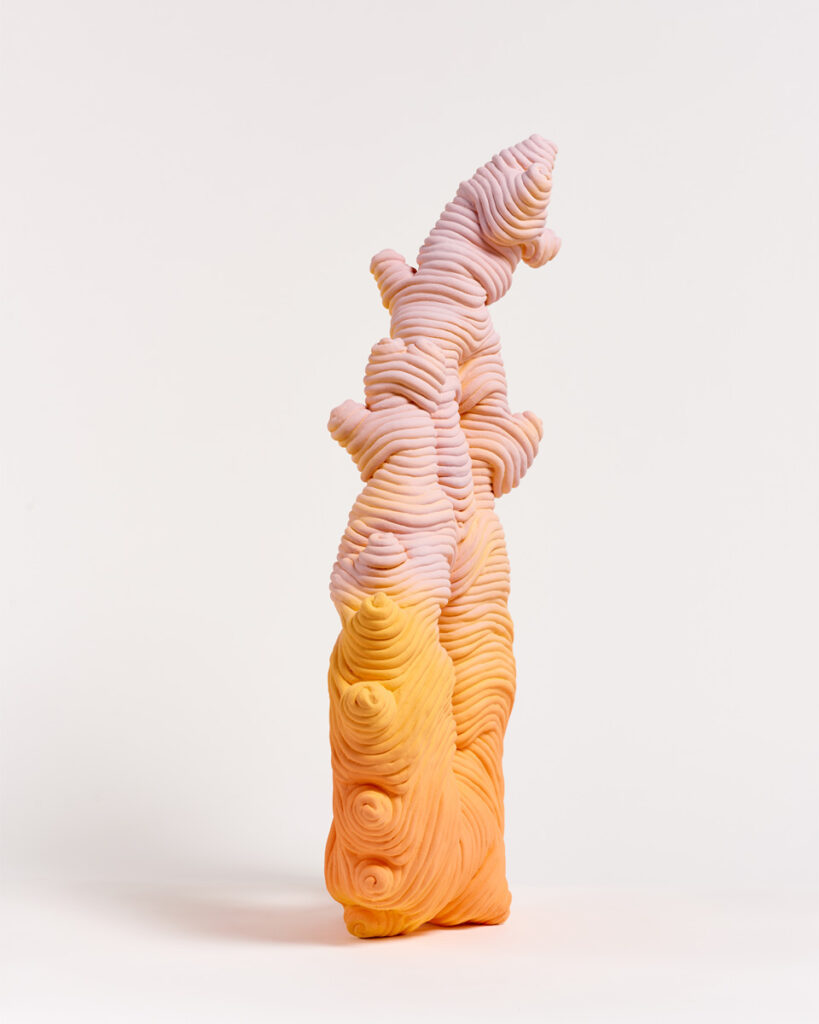
Eusebio Sánchez. Exposed, 2019
Change and uncertainty, or the “search for the unfindable”, are a constant feature of the work of this group of artists.
Rafa Pérez, Roger Coll, Eusebio Sánchez and Ícaro Maiterena undertake their work with an open mentality.
While the first artist creates using pure improvisation, Roger and Eusebio advance in their decision-making process as the pieces take form. Ícaro Maiterena goes with the flow, pouring his energy into the clay and holding out against the stability of the finished product.
María Oriza thinks that chance is not a question relating the materials used, the oven or the production process. Instead “it relates to the way in which objects interrelate amongst themselves and with space”.
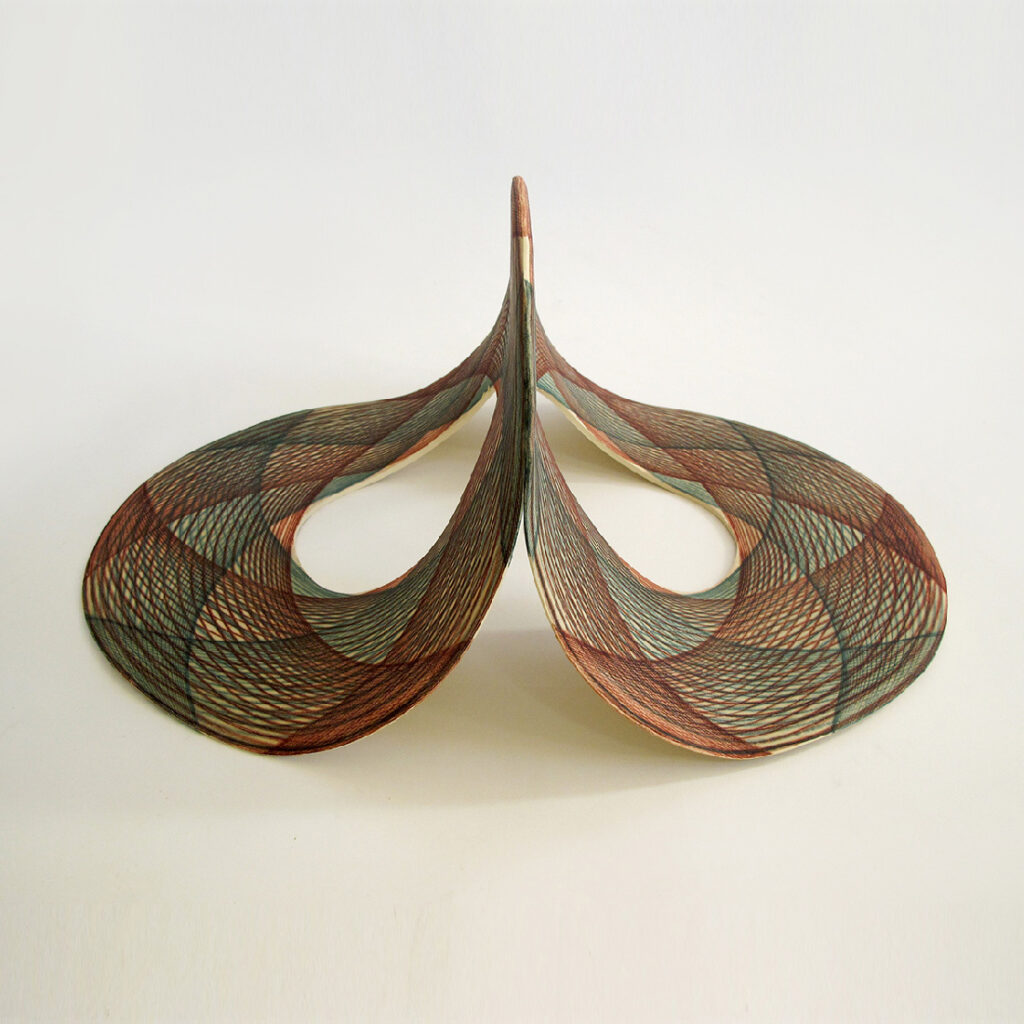
María Oriza. Caburé, 2021
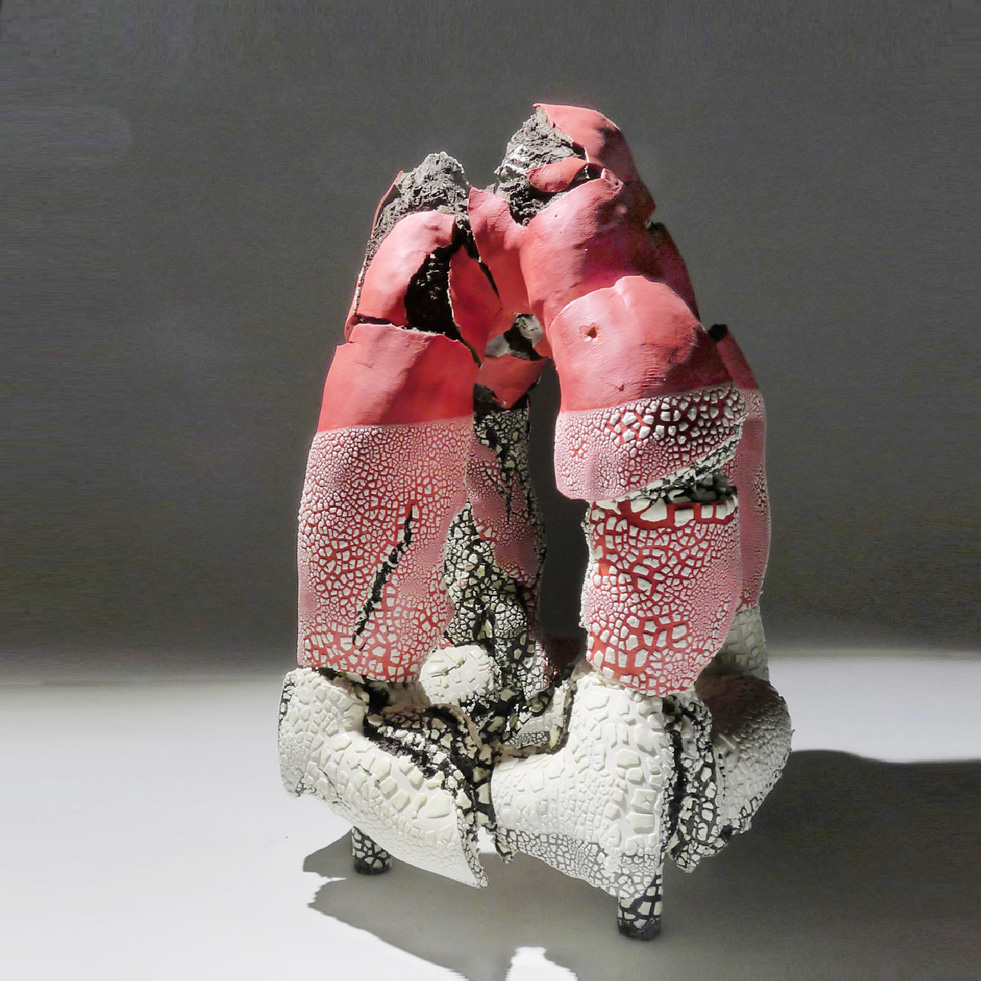
Rafa Pérez. Sin título, 2016
“… as the sculpture progresses, I reach decisions on how to give form to the final work. Often, it differs from the initial idea. I like to think that it’s like ‘taking a coil for a walk’ and this expression is based on Paul Klee’s work, when he said he was ‘taking a line for a walk’.”
Eusebio Sánchez
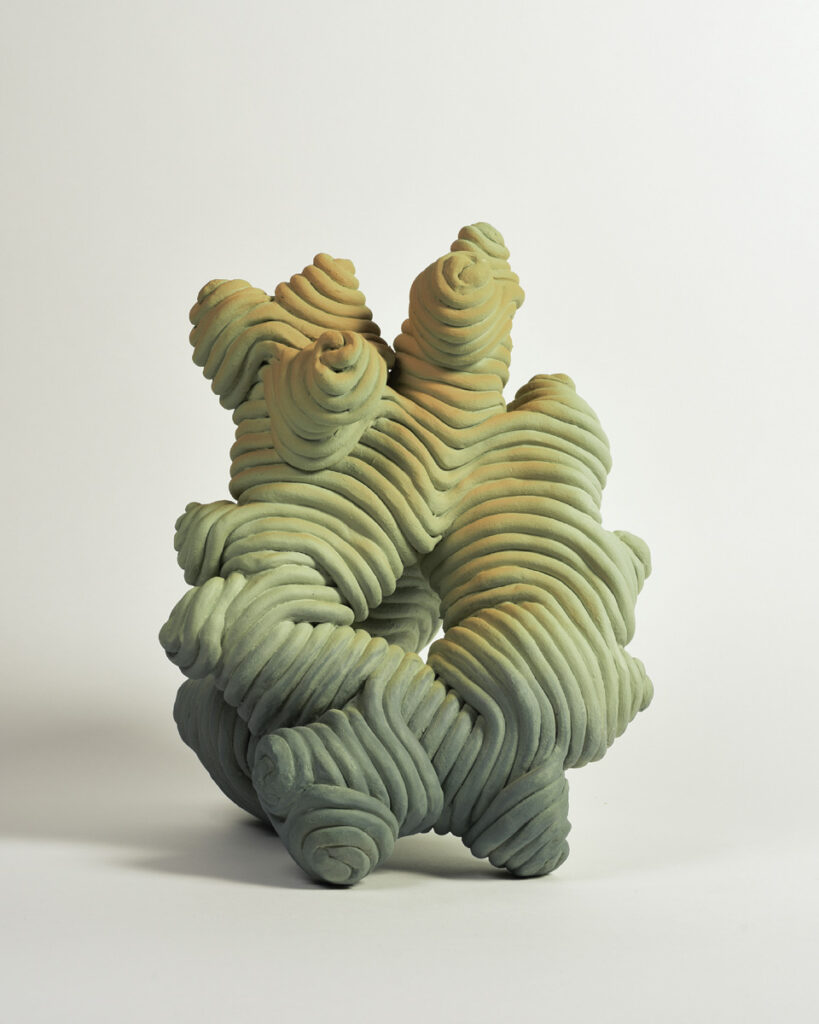
Eusebio Sánchez. Coil Form, 2021
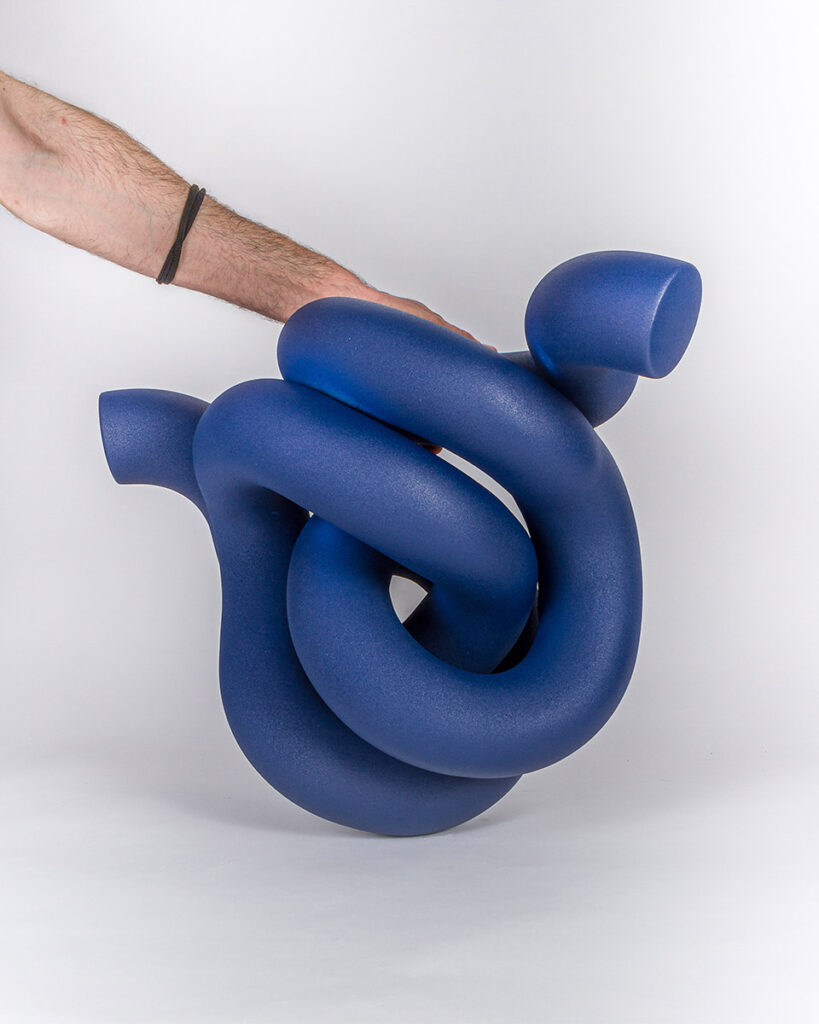
Roger Coll. BLUEEI2101, 2021
Exploring the properties of material, to push it to its limits, allowing it to look ambiguous, to cause surprise and to lead us to question what we are seeing, is something that a number of these artists have in common. Thus, the “geological products” of Ícaro Maiterena could be fragments of wood found in the wild or tokens of landscapes, while the vessels created by Nicholas Arroyave-Portela look like they are made out of leather or creased paper. Meanwhile, the polished and shiny coatings of some of the artworks of Roger Coll remind us of some metals.
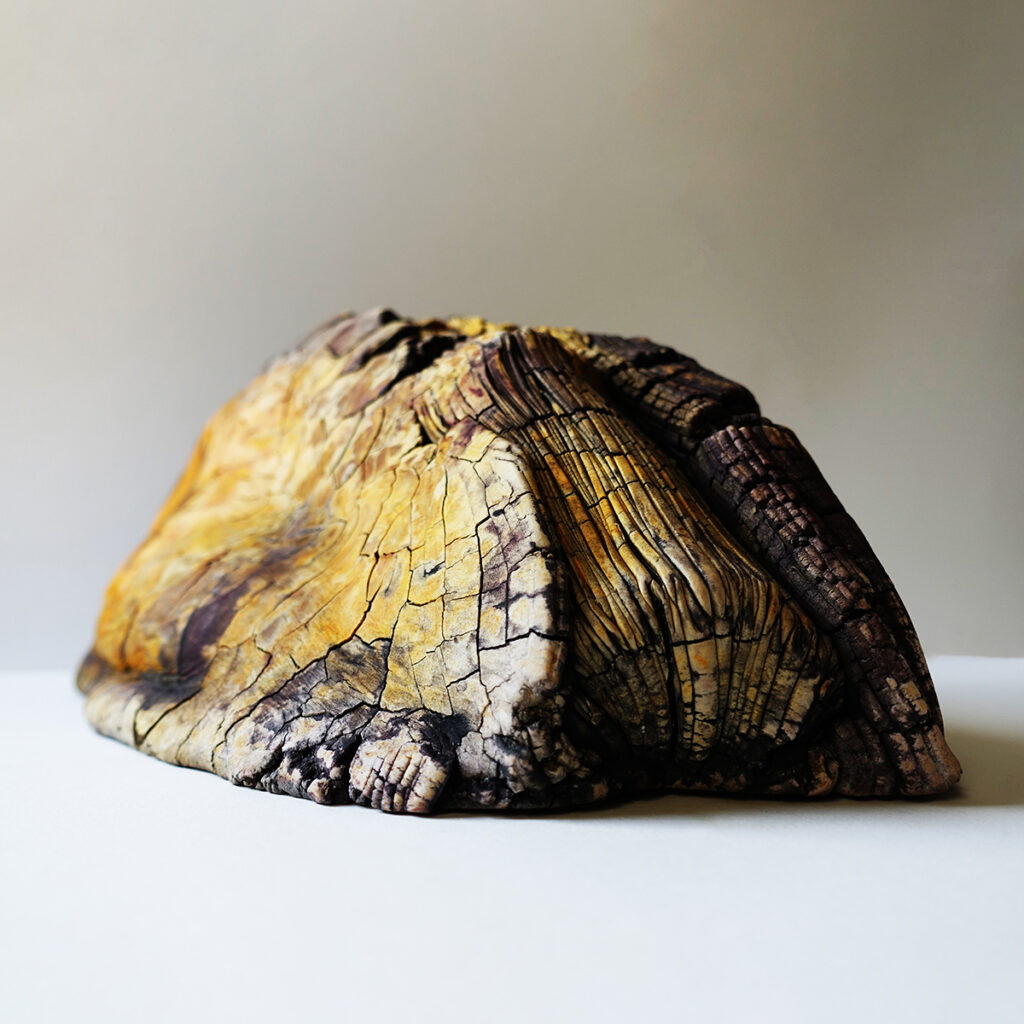
Ícaro Maiterena. Transmutación Polyporus Fomentarius, 2020
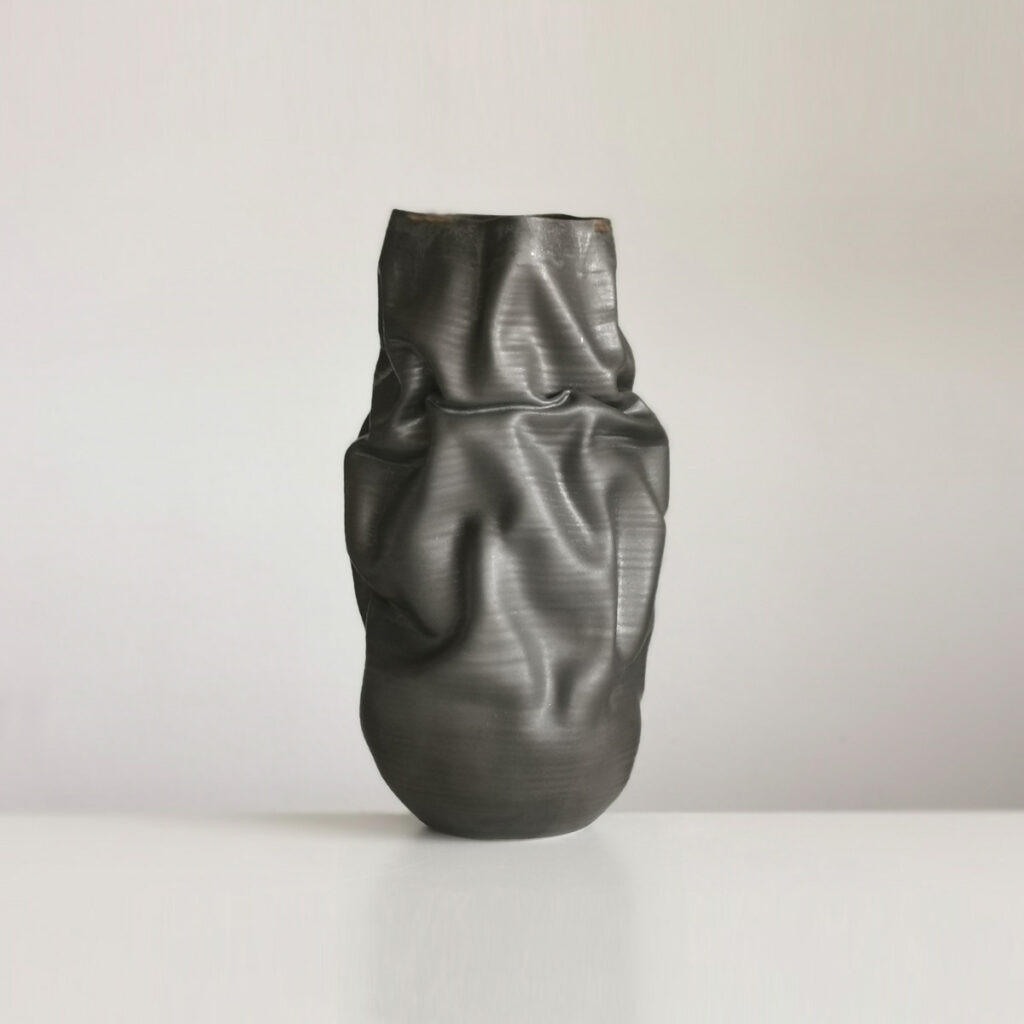
Nicholas Arroyave-Portela. Nº 68 Tall Crumpled black form, 2021
All the works on show here are unique pieces, captivating us with their narrative. Pieces that capture landscapes, movements, time or emptiness. These works are conceptual and almost always intuitive. Their shapes are abstract, organic or geometric. The finishes are diverse. They have no defined function. In short, these are exceptional works, with multiple interpretations, which are full of expression and convey emotions.

